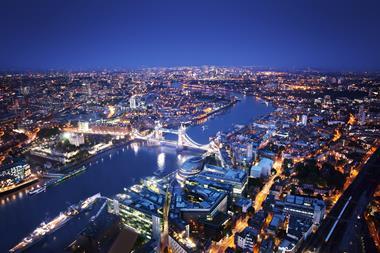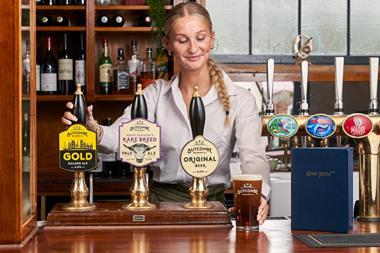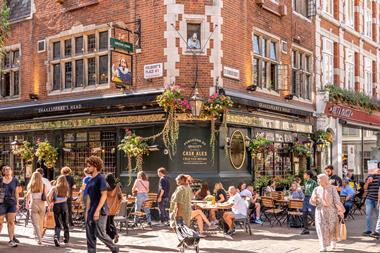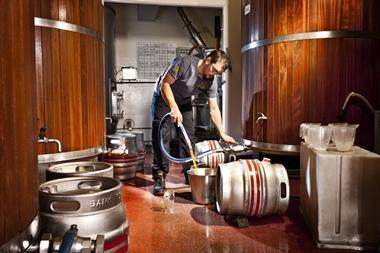Liverpool City Council introduced the Late Night Levy (the ‘levy’) on 1 April 2017. This followed a consultation detailing the proposal and subsequent approval from the Full Council.
Poppleston Allen made a Freedom of Information request of the Council to analyse and review its impact one year on, comparing the information provided against previous projections and what was proposed by the Council in its levy consultation reports. We also made a Freedom of Information request to the Merseyside Police, in respect of the levy and crime statistics relating to this period in Liverpool. This report summarises our findings and is based on information provided by the Council and the Police in response to our requests.
Number of Premises That Paid the Levy
Liverpool City Council opted to apply the levy to premises which are permitted to supply alcohol between midnight and 0600 hours. A discretionary exemption was applied for all those premises licensed to sell alcohol beyond midnight on New Years Eve only and Business Improvement District (BID) premises members.
Prior to the levy being adopted, the Council identified in its consultation report 937 premises potentially liable to pay the levy which supply alcohol between the levy period. The Council confirmed in its consultation report that the number of premises liable to pay the levy would reduce if any discretionary exemptions were approved and where premises would no longer be liable to pay the levy because they would apply through free minor variations to reduce hours to avoid the payment of the levy.
In reality, the Council confirmed 520 premises paid the levy, 417 less than this number potentially liable to pay the levy prior to it being adopted.
Number of Premises that reduced their hours to avoid the levy
The Council confirmed that they estimated that “around 140” premises may reduce their hours on their licence by way of a free minor variation to avoid the levy prior to it being adopted. The figures from the Council confirm that in fact 161 premises reduced their hours by way of a free minor variation to avoid the levy, an additional 21 premises, and 15% more the Council had predicted. Furthermore, the Council have confirmed that “currently 38” more premises reduced their hours resulting in them avoiding the levy by way of a variation with a council fee being paid. The Council have not provided information to confirm if all of these 38 premises reduced their hours in the first year of the levy or in the subsequent year, nonetheless it is clear some premises have been wiling to go to their own expense to reduce their hours.
Exemptions and Reductions
Save for the New Year’s Eve and BID exemptions, there were no other exemptions or reductions permitted from the levy.
The BID exemption was not previously proposed by the Council. However, feedback from the levy consultation indicated a majority of consultees felt further exemptions other than New Year’s Eve should be applied and over 30% of consultees requested a BID exemption. Subsequently, the final agreed format of the levy included a BID exemption.
We asked the Council how many premises they had estimated would be exempt from the levy if the BID exemption applied and they confirmed that they “do not have this information”. They did confirm however that 171 premises were exempt from the levy due to membership of the BID, this is over 18% and almost one fifth of the number of premises that were potentially liable to pay the levy prior to its adoption.
Proceeds and Expenses Levy
The Council’s levy consultation report (prior to adopting the levy) projected gross “maximum revenue” from the levy of approximately £903, 000 if all 937 liable premises paid the levy. The Council also estimated expenses costs of £53,0000 to introduce the levy, “one off costs and cost of collection”, which would include to consult and administer free minor variations to reduce hours offered when a levy is adopted.
The Council projected the ‘”Net Levy” revenue would be £517,000.
This was based on the initial proposal, minus estimated administrative costs, an estimated reduction to levy revenue of £143, 000 due to premises variations to avoid the levy and £190,000 reduction if the New Year’s Eve exemption applied.
However, this projection did not include the effect of the BID exemption that was subsequently applied when the levy was approved. Notwithstanding this, the Council separately estimated the costs of each exemption applying within its post-consultation report, estimating that gross levy revenue could be reduced by as much £118,000 if the BID exemption was applied. Therefore using these figures we can calculate that the Council’s projected figures including the BID exemption reduction would be gross revenue of £452,000, and minus estimated administrative costs, a projected net levy revenue of £399,000.
The actual amount collected from the levy in the first year was confirmed as £393,065 gross revenue, and administrative costs were £63,259, leaving net revenue of £329,806.
The gross revenue collected is almost £60,000 less than the Council’s projected figures and net revenue almost £70,000 less than projected.
The Home Office Guidance on the levy indicates that “any financial risk (for example lower than expected revenue) rests at a local level and should be fully considered” prior to adopting the levy. The figures show that the Council overestimated the amount that would be raised from the levy in its first year. This may be due to a combination of factors, including that administrative costs were over £10,000 more than projected and the fact that more premises than anticipated reduced their hours by way of a variation (both free minor variations and ones where council fees were paid). Another factor to consider is that the BID exemption was not initially part of the Council’s proposal and it may be the case that the knock-on effect of adopting the BID exemption was not further explored, and whether this may have resulted in more premises joining the BID and therefore avoiding the levy, leading to greater reductions in levy revenue than had previously been anticipated.
Use of Proceeds by Police and Council
We understand that the net levy funds have been divided, 70:30 ratio between the Police (Policing and Crime Commissioner (PCC) and Council.
The Council have confirmed that their portion of the funds will be divided between “the City Centre Joint Agency Group and Street Cleaning” and the decisions on spending funds will be made by the Council’s “Director of Community Services”. They did not confirm whether all or any of their portion of levy funds has been spent and what if it has been spent on. We understand that the ‘City Centre Joint Agency‘ meeting group has been established for “well over 10 years… “ and the “agency is made up of Police, Council, Merseyside Transport, Public Health”
The Council confirmed that they have not consulted levy payers regarding the spending of the money and how the money from the levy is spent. In respect of whether there has been consultation between the Police and levy payers, the Police explained that “no meetings have taken place with the levy payers. The City Centre Neighbourhood Inspector has discussed the issue at Pubwatch meetings. Views of what the trade would like police to focus on have been sought and the responses will be considered in line with operational commitments.”
We asked the Council how information is to be provided to premises regarding how the money from the levy is spent and they confirmed “ this is to be discussed in the coming months”.
The Police confirmed that they have been provided with £240,800 from the levy proceeds. Their portion has been used for additional officers, stating: “It has allowed additional officers to police the city centre on Thursday evening and a Saturday evening to target people involved in crime (particularly crime such as drug dealing, robbery) and other offences. This will continue throughout the year. Due to some significant events in the city centre such as the day of the local football derby, the Champions League games and the Grand National Force has been able to provide additional officers to prevent crime, disorder and support our communities. ”
The Police did provide a breakdown of how their allocation of levy funds has been spent.
Review of the Effectiveness of the Levy and its Impact
We asked the Council if any assessment has been made as to the effectiveness of the levy and if not, whether any review is planned. The Council confirmed “review meetings are to be held in the coming months”
We requested the Police provide specific crime statistics relating to Liverpool to establish whether there has been any reduction in crime and disorder since the levy was introduced, which were provided by the police. However, as the full levy proceeds have not yet been used, it could be argued that the true effect of the levy on crime and disorder in Liverpool cannot be properly assessed until the funds are used and the funded operations are given time to show their effectiveness with regards to reducing crime. Therefore we feel it may be more apt to revisit the crime statistics in one or two year’s time to assess the effectiveness of the funded operations with regard to reducing crime and disorder. Analysing such data will also be a vital factor for the Council to consider as part of the review of the levy and its impact on the city.
Precis
Legislation Focus: Late Night Levies
Licensing law firm, Poppleston Allen, uses Liverpool as a case study for how late night levies are implemented and their impact.



































